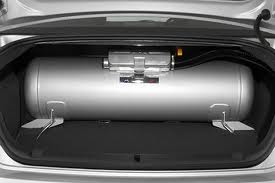How an LPG Tank Test Is Performed
The Australian government requires that a LPG tank test be performed once every 10 years. The tank’s test expiration date should be clearly stamped on the gas container. If you are unable to find the date, an Autogas service technician will be the best person to advise you when the tank is due to be tested.
An expired LPG cylinder should not be used until it has been tested at a certified test station. If the certification period will expire before the next scheduled vehicle service, arrangements should be made for the gas container to be re-inspected and restamped at a certified gas cylinder test station before then.
 How an LPG Tank Test Is Performed
How an LPG Tank Test Is Performed
The tank will be taken out of the car for full examination. If there is LP gas remaining in the tank, it will be emptied before the inspection is begun. These two steps in the process must be done before anything else
The outside of the tank is checked for corrosion, bulges, dents, scratches or any other type of damage and wear. If there are any sign of damage, the amount of damaged assessed and determined whether the tank will pass or fail.
For an internal exam, the valves are taken out of the tank. An internal visual examination is performed with LED lights, mirrors and borescopes to check for corrosion, scaling and heat damaged areas. Contaminates are cleared out, valve threads and sealing surfaces are cleaned and thoroughly inspected for any damage or wear.
The valves are also checked their ability operate correctly. The pressure relief valve is thrown away and a new one is installed every time a LPG tank is tested. The automatic fill limiter, content level arm, service tap and excess flow valves are also checked for wear and correct operation. These are also replaced if needed.
All other valves are re-installed, all seals are replaced and all threads are re-sealed.
For pressure testing, the LPG tank is pressurised to 330 psi or 2.3 Mpa. All of the welds of the tank are checked for leakage, as well as all of the valves and fittings. If there are no leaks and no defects of the tank have been detected, it is re-stamped with the new inspection code and a new certificate is issued.
For more information on LPG tank testing, please visit this government website:
https://www.commerce.wa.gov.au/sites/default/files/atoms/files/auto_lp_gas_safety.pdf


